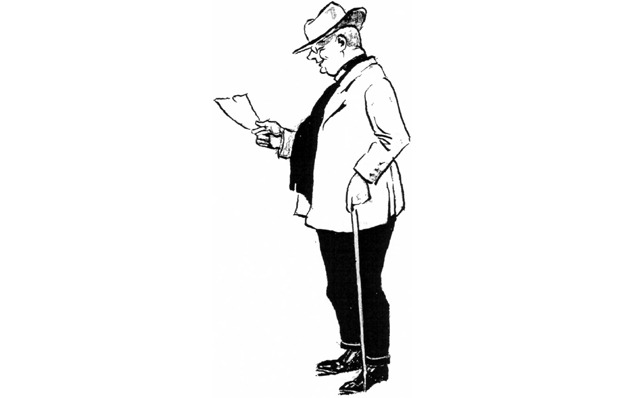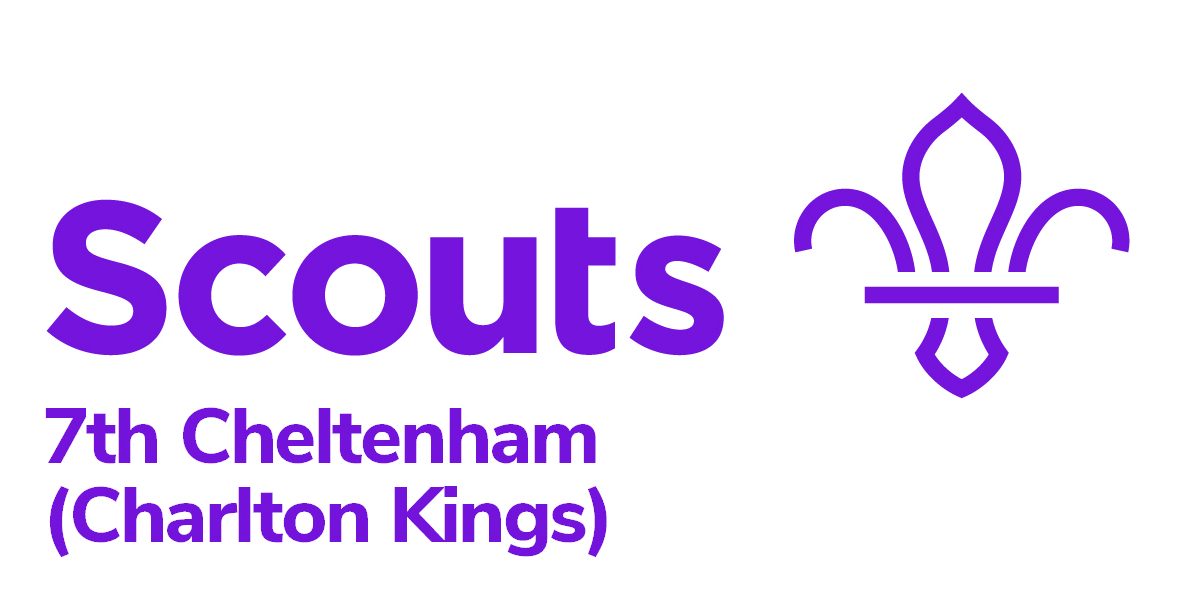I am not here to sell you the Coln country, and for two reasons. Firstly, it has already been done by more competent people than I, and secondly, had it not, it would be capable of selling itself – a most beautiful trout stream meandering through the COTSWOLDS on its way to the North Sea.
When the scout-master, Mr. E.J. FEAR, rang me up in July 193 , and asked me if I could help with a camp at Coln St. Aldwyns, I said I’d be delighted. His business then was in its early stages and a bit demanding, and as a young family man, I had not got a lot of spare money to spend on expensive holidays.
I was then living in the PAINSWICK ROAD area of Cheltenham and not so readily in touch with the 7th, but one Sunday morning the S.M. picked me up in his car and whirled me off to do a RECE in Coln St Aldwyns.
It was a nice run-up and the spot that the S.M, had got permission to use was excellent. It was flat, it was dry, there was shade if needed. Water and fuel were handy, and the spot was no distance from the village. The estate carpenter showed us round, and he and I took to each other. So we decided on our pitch, and on the first Saturday in August, we brought the 7th Cheltenham up to Coln St Aldwyns in a lorry.
It was an easy camp, some are. Nice weather, no mishaps, good neighbours, everything was fairly comfortable. But camps are seldom featureless, and this one was not. It was a pity the S.M, could not be in camp the whole time. No one regretted that more than he. But I did my best to deputize and he seemed satisfied, so that covered that.
But if you remember, about that time the cinema was so well established that people were being encouraged to make their own films, and small cine cameras were becoming popular. The S.M, had one of these expensive cinematograph playthings and his immediate ambition was to make a record of a day in a scout camp. This, as far as I was concerned, was impossible because he could not be in camp all the time. Did I think I could take over and do the necessary photography when he was not about? Now that was different! It was one thing to look after the welfare of a troop of scouts in camp, twenty• four hours a’ day, for a fortnight, but to contract to handle a new contraption like a cine camera was quite another matter. You see, I hate things mechanical. Actually I think I am afraid of them. Even fountain pens, I’ve always said “wait for me”, and immediately I hold one, it splutters all over the place and refuses to behave. I can’t use them. Now, a cine camera!
Certainly the opportunity was too good to miss. So after extensive explanation by the S.M. before his departure, I summoned all the courage I possessed and accepted the proposition.
It was a very pleasant, reasonably uneventful, camp. One difference for me was that I had my family with me. BILLIE my wife and TONY my only son. He was about three years old. Billie was a great friend of the 7th and they were very fond of her. They all got on very well together. Oh no! I did not on this occasion have them under canvas. Tony was too young. No, we found a cottage in the village where they slept, but the rest of the time they spent with us. Tony found this early life among the tents and the scouts, very attractive.
Attached to our paddock was the estate carpenter’s yard. We spent a good deal of time talking together and in his line I found him very well informed. Just the story of the design of a five-barred gate I found more intriguing than I could have imagined – what a weight the supporting oak post had to carry and how that weight was distributed. And that was only par of it. What had the gate to keep out of the field -or, for that matter, what it had to keep in? So how best to place the horizontal strips? Much of this, of course, had been decided by tradition, but experiments in agriculture and its attendant necessities were still going on.
But, of course, I had to keep in mind what the G.S.M. wanted in his absence, and I did my best with the camera, but I am afraid it wasn’t very laudable, and the serious bits of photography were done by the S.M. on his quite frequent visits to the camp. He was very adept, but I came to the conclusion that with my rooted mechanical terrors, my line might be that of a director. We discussed this, and the S.M. suggested I should have a bit of the film to myself – he would do the photography, I would direct the actors. This was much better. I felt much more at home, and I “went to town”. The section I was doing was the issuing of rations in the morning to patrols from the quartermaster’s tent. I did it in style, as far as I knew. My actors were briefed and even well drilled. As they moved, I gave constant instructions, and they took direction excellently. I thought we’d have a bit showing the gigantic job it was feeding all these boys, so shot a low horizon scene and made it all look immense. It was a piece of work I was very proud of, and when we got it moving and the SM was just as proud to photograph the action, we were all very satisfied —- until we discovered we hadn’t got a film in the camera! and had to do it all over again.
Well, we expected our little set-backs, and we got them, but nevertheless the film was completed, and in those early days I think it was quite an accomplishment.
The cutting was of course left to the S.M. Then he had the bright idea of “Graphics”. Now graphics could only mean me. If anything had to be drawn, they always sent for me. Mr FEAR bought a frame in which the camera could be placed to photograph the graphics – I did the graphics. They were mildly humorous while being quite informative. The whole made a very presentable little film of which we were, I think, justly proud.
One of the outstanding days of each camp was Visitors’ Day. This camp was no exception. A full charabang of parents came to visit their offspring, and, as usual were mostly very complimentary about the way the boys were looked after in camp. It had also become fairly traditional for the troop chaplain to accompany the visitors; and there, sure enough, as the bus stopped inside the paddock, dismounted the Vicar in a white linen coat and a panama hat. This of course was filmed and had a graphic. Mind, I quote from memory, but I think it was something like “S.S. Lyefield comes to anchor outside the Quennington Dock”. So you car. see the spirit of the film.
But, as I say, the camp was mainly without incident When we got back, however, there was a lot of work to do on the film. Cutting, illustrating, photographing and then linking all up again. Of our spare time it took us, I suppose, some 3 or 4 weeks.
Then there was a “first night” – of course to the troop at headquarters – and it was a great success. We know novelties usually are, but the film is still in existence and if I saw it again, I think my opinion would be still the same.
But there was one very dramatic result of the film showing. PERCE had not been at the camp. His work, as a young reporter, did not permit of his being free in August; but there he was to see the first showing, and when it was over his imagination was bubbling over with the story he would write for tomorrow’s first edition. It was not all clear yet, but the matter was there. However, one thing was crystal clear. Of the placard that proceeded the afternoon edition, there was no doubt in his mind what the content would be. It would be short and concise – have instant drawing power, it would be a statement that demanded immediate elucidation, and to complete the excellency of his ideal placard, it should have the power mildly to shock.
Shock? Mildly shock? Imagine the village of Charlton Kings that September evening as it went round innocently to get its early evening paper to be confronted by Perce’s devastating placard in front of the small paper shop “VICAR OF CHARLTON KINGS SHOT AT COLN ST ALDWYNS”!

Extract from Charlton Kings Local History Society Autumn 1982 Volume 8 pages 4-7 Author: George Hyland
